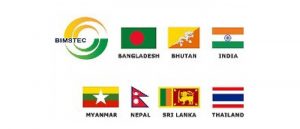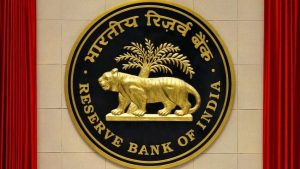Today’s Current Affairs: 7th April 2025 for UPSC IAS exams, State PSC exams, SSC CGL, State SSC, RRB, Railways, Banking Exam & IBPS, etc
Table of Contents
Star-rating System for State Environmental Bodies:

The Centre has dropped the star-rating system for state environmental bodies after a legal challenge by a Tamil Nadu fishermen’s association, as per an order by the National Green Tribunal’s southern bench.
- The Ministry of Environment, Forest and Climate Change (MoEF&CC) introduced a star-rating system to evaluate State Environmental Impact Assessment Authorities (SEIAAs). The purpose was to assess their efficiency in granting clearances for industrial and infrastructure projects.
- The star ratings ranged from 0 to 7, with higher ratings reflecting:
- Faster approval times
- Stricter adherence to timelines set out in the 2006 Environment Impact Assessment (EIA) Notification
- The Ministry’s aim was to streamline the environmental clearance process to foster a more business-friendly environment, while also maintaining regulatory standards.
- The star-rating system was designed to:
- Recognize and incentivize states that adhered to timelines and regulatory standards.
- Encourage environmental bodies to expedite the clearance process without compromising the environment.
- The introduction of the star-rating system faced significant opposition, particularly from environmental advocacy groups.
- The Tamil Nadu Fishermen’s Association argued that the star-rating system could compromise the scrutiny of environmental clearances.
- Their concern was that the emphasis on speeding up the clearance process could dilute the thoroughness required in assessing projects that may impact environmentally sensitive areas.
- They emphasized the risk of weakening the environmental safeguards essential for protecting local ecosystems, biodiversity, and community livelihoods.
- The dispute led to intervention by the National Green Tribunal (NGT). The NGT issued an order noting that the MoEF&CC had effectively “given up” on the system.
- The Ministry withdrew the original Office Memorandum (OM) dated January 17, 2022, with a possibility of issuing a revised memorandum in the future.
PM inaugurated New Pamban Bridge:

The new Pamban Bridge, inaugurated by Prime Minister Narendra Modi in Rameswaram, Tamil Nadu, on April 6.
- The Pamban Rail Bridge, also known as the Rameswaram Bridge, is a historic cantilever bridge that connects Rameswaram Island to the mainland of India.
- Opened in 1914, it has served as a vital transportation link for over a century, playing a key role in both regional and national connectivity.
- In recent years, the Pamban Rail Bridge has undergone significant upgrades to enhance its functionality and accommodate modern transportation needs:
- In 2025, a new vertical lift span was added, making the Pamban Bridge India’s first vertical lift sea bridge. This feature allows the central span to lift, providing 22 meters of clearance for ships, an improvement from the previous 19 meters.
- The upgraded bridge now supports double-line electrification, allowing for faster train operations between the mainland and Rameswaram Island.
- The modernization project began in 2019 and was completed by March 2025, with the newly upgraded bridge becoming operational during this period.
Delhi to implement Ayushman Bharat Jan Arogya Yojana:

Delhi government signed an MoU with the National Health Authority to implement Ayushman Bharat Pradhan Mantri Jan Arogya Yojana.
- The Delhi government has signed an MoU with the National Health Authority to roll out the Ayushman Bharat Pradhan Mantri Jan Arogya Yojana, making Delhi the 35th Union Territory/state to implement this flagship health insurance scheme. West Bengal remains the only state yet to adopt it.
- Ayushman Bharat is a flagship healthcare initiative by the Government of India, designed to provide accessible and affordable healthcare services to vulnerable sections of society.
- Launched on 23rd September 2018, the scheme is officially known as Ayushman Bharat Pradhan Mantri Jan Arogya Yojana (PM-JAY).
- It is recognized as the largest health assurance scheme in the world.
Ream Naval Base:

Ream Naval Base in Cambodia has gained attention due to expansions backed by China, raising concerns about a potential Chinese military presence in the region.
- The Ream Naval Base is located on Cambodia’s Gulf of Thailand coast, near Sihanoukville.
- It has become a significant focal point of international attention due to its expansion and Chinese military involvement.
Recent Developments - Cambodian Prime Minister Hun Manet officially inaugurated the expanded Ream Naval Base. The project received substantial financial and technical support from China.
- While Cambodian officials maintain that these developments serve national defense interests, there are persistent concerns about the potential Chinese military presence at the base.
- The Ream Naval Base holds significant strategic importance due to its proximity to the Malacca Strait, one of the world’s most vital maritime passages for global trade and energy shipments.
- China’s involvement in the base’s development has raised concerns about its broader intentions to establish a strategic foothold in the Indo-Pacific region.
- This could potentially encircle India and bolster China’s naval presence in the South China Sea, a region of increasing geopolitical importance.
- The expansion of Ream Naval Base has drawn reactions from multiple international stakeholders:
- Satellite imagery has revealed the presence of Chinese warships at the base, heightening suspicions about the base’s potential role as a Chinese military outpost.
Dwarkadhish Temple:

A group of 300 Pakistani citizens of Indian origin, residing in Pakistan’s Sindh, recently visited the Dwarkadhish Temple, Devbhumi Dwarka in Gujarat and offered prayers.
- Located in Dwarka, Gujarat, India, the Dwarkadhish temple, also known as the Jagat Mandir, is a revered Hindu temple dedicated to Lord Krishna, who is referred to as Dwarkadhish, which means the ‘King of Dwarka’.
- This temple holds immense significance as it is one of the destinations along the Char Dham pilgrimage circuit, which includes the other pilgrimage sites, Badrinath, Rameshwaram, and Puri.
- According to archaeological findings, the original temple was built in 200 BCE at the earliest.
- It is believed to have been constructed by Vajranabha, the great-grandson of Lord Krishna, over the hari-griha (Krishna’s residential place).
- The temple was rebuilt and made bigger in the 16th century.
- The temple has a five-story building supported by 72 pillars, which are made of limestone and sand.
- Bearing the imprints of the 16th-century Chalukya style of architecture, the temple has intricately carved walls with mythical characters and legends on them.
- The temple is a Pushtimarg temple, which means that it follows the teachings and rituals of Vallabhacharya, a 15th-century Hindu saint and philosopher.
- Vallabhacharya propounded the philosophy of Shuddhadvaita, or pure non-dualism, which emphasizes the devotion and grace of Krishna.
- The temple is managed by the descendants of Vallabhacharya, who are known as Vallabha Kul.
- The temple has a special relationship with the Nathdwara temple in Rajasthan, which is the main seat of the Pushtimarg sect.
- The temple is one of the 108 Divya Desams, or holy abodes of Vishnu, which are glorified by the Alwars, the 12th-century Tamil poet-saints.
- The temple is the 98th Divya Desam and is praised by four Alwars: Nammalwar, Thirumangai Alwar, Thirumalisai Alwar, and Periyalwar.
- The temple is also mentioned in the works of other Hindu saints and scholars, such as Adi Shankara, Ramanuja, Madhvacharya, and Narsinh Mehta.
Antimony:

Pakistan reportedly discovered a massive cache of antimony in the conflict-torn region of Balochistan.
- Antimony is a chemical element with the symbol Sb and atomic number 51.
- Classified as a metalloid, antimony is a solid at room temperature.
- It exhibits poor electrical and heat conductivity
- Commercial forms of antimony are generally ingots, broken pieces, granular, or cast cake.
- Antimony ores occur both in deposits associated with volcanic rocks and also in more deep-seated veins formed under moderate to high temperatures and pressure.
- The chief ore of antimony is stibnite. It is more commonly obtained as a byproduct in lead-zinc-silver mines.
- Producers:
- China produces 88% of the world’s antimony.
- Other producers are Bolivia, Russia, and Tajikistan.
- Antimony is used in the electronics industry to make some semiconductor devices, such as infrared detectors and diodes.
- It is alloyed with lead or other metals to improve their hardness and strength.
- A lead-antimony alloy is used in batteries.
- Other uses of antimony alloys include type metal (in printing presses), bullets, and cable sheathing.
- Antimony compounds are used to make flame-retardant materials, paints, enamels, glass, and pottery.
Mukundra Hills Tiger Reserve:

A massive fire, triggered by stone-crushing sparks, erupted in Mukundra Tiger Reserve recently.
- Mukundra Hills Tiger Reserve is situated near Kota in southeastern
- It is named after two continuous flat-topped, almost parallel hills with narrow central ridges, forming part of the Vindhyan range and extending from the Chambal River to Kalisindh, with a length of almost 80 km. and the width ranging from 2 to 5 km.
- The tiger reserve was constituted in the year 2013, which encompasses the area of Mukundra National Park, Dara Sanctuary, Jawahar Sagar Sanctuary, and part of Chambal Sanctuary (from Garadia Mahadev to Jawahar Sagar Dam), forming its core/ critical tiger habitat.
- It was once a hunting preserve belonging to the Maharaja of Kota.
- It is traversed by four rivers: Chambal, Kali, Ahu, and Ramzan.
Saryu River:

Devotees in large numbers continue to take holy dip in the Saryu River as they arrive at Ram temple in Ayodhya, on the occasion of Ram Navami.
- Saryu River is a river that flows through the Indian states of Uttarakhand and Uttar Pradesh.
- It is also known as the Sarayu or Sarju River.
- This river is of ancient significance, finding mentions in the Vedas and the Ramayana
- It rises at Sarmul (or Sarmool), which is located in the extreme north of the district Bageshwar of Uttarakhand on the southern slope of a ridge of the Nanda Kot.
- It flows through the Kumaon Himalayas, and passes by the towns of Kapkot, Bageshwar, and Seraghat before flowing into the Sharada River at Pancheshwar at the India-Nepal border.
- Sharada River (also known as the Kali River) then flows into the Ghaghara River in Sitapur District, Uttar Pradesh.
- Lower Ghaghara is popularly known as Sarayu in India, especially while it flows through the city of Ayodhya.
- Approximately 350–400 kilometers long.
- Ayodhya, the birthplace of Lord Rama, is situated on the banks of the river Sarayu.
Technology and Innovation Report 2025:

India has been ranked 10th in the world with significant private investments in Artificial Intelligence (AI) in 2023, according to the 2025 Technology and Innovation Report.
- It was released by the UN Conference on Trade and Development (UNCTAD).
- It seeks to address issues in science, technology and innovation that are topical and important for developing countries in a comprehensive way with an emphasis on policy-relevant analysis and conclusions.
- The 2025 edition of the report, entitled: Inclusive artificial intelligence for development, aims to guide policymakers through the complex Artificial Intelligence (AI) landscape and support them in designing science, technology and innovation policies that foster inclusive and equitable technological progress.
- Highlights of the Report:
- It shows that just 100 companies, mostly in the United States and China, are behind 40 percent of the world’s private investment in research and development, highlighting a sharp concentration of power.
- At the same time, 118 countries – mostly from the Global South – are missing from global AI governance discussions
- The report estimates that up to 40 percent of global jobs could be affected by AI.
- To avoid being left behind, developing countries need to strengthen what UNCTAD calls the “three key leverage points”: infrastructure, data and skills.
- India and China are the only developing countries in the world with significant private investments in AI in 2023.
- The US leads the world in terms of private investment in AI, at 67 billion US dollars in 2023, or 70 percent of global AI private investment.
- China was in second position, with 7.8 billion US dollars, and India in tenth position, with 1.4 billion dollars.
- India ranked 36th in 2024 out of 170 nations on the Readiness for Frontier Technologies Index, improving its position from 48th in 2022.
Koch-Rajbongshis Community:

Assam to withdraw foreigner tribunal cases against indigenous Koch-Rajbongshi community.
- The Koch-Rajbongshi community is an ethnic group primarily found in the northeastern region of India, particularly in the states of Assam, West Bengal, and parts of Meghalaya.
- They are a blend of two historically distinct communities: the Koch and Rajbongshi.
- While these groups share cultural similarities and have had a long history of coexistence, they also retain some distinct identities.
- The community is seeking recognition as a Scheduled Tribe in Assam and other states to access government welfare and legal protections
- The Koches were a group of people who once ruled parts of what is now Assam, Bengal, and Bihar.
- They are thought to have descended from the ancient Kachari Kingdom, which ruled the region for centuries before being absorbed by the Ahoms in Assam.
- The Koches were originally a Mongoloid ethnic group, and they are believed to have gradually merged with the local communities over time.
- The Rajbongshi people were originally a part of the Koch dynasty, but later developed a distinct identity.
- Over time, they spread into regions of Bengal and Assam.
- They were part of the Bengali-speaking people in the past and often associated with the agricultural and peasant classes.
Anti-NEET Bill: President Withholds Assent:

President has withheld assent to Tamil Nadu’s Bill seeking exemption from the mandate of NEET-based admissions for undergraduate medical courses in government medical colleges.
Anti NEET Bill:
- In September 2021, the Tamil Nadu Assembly passed the Tamil Nadu Admission to Undergraduate Medical Degree Courses Bill, 2021, commonly referred to as the Anti-NEET Bill.
- This legislation seeks to exempt the State from the National Eligibility cum Entrance Test (NEET) for medical admissions, advocating for the selection process to be based on Class 12 examination marks.
- It was introduced following concerns that NEET disproportionately affects students from disadvantaged backgrounds.
- Since its passage, the bill has been awaiting the President’s approval, however, it has been withheld assent based on the recommendations of the Union government.
Vibrant Villages Programme-II:

The Union Cabinet recently approved the Vibrant Villages Programme (VVP)-II for the period 2024-2029, as a 100% centrally funded scheme.
- Launched in 2023, the VVP is a centrally sponsored initiative aimed at the comprehensive development of villages along India’s northern border.
- The goal is to improve the quality of life for residents and enhance border security.
- The programme covers the states of Arunachal Pradesh, Himachal Pradesh, Sikkim, Uttarakhand, and the Union Territory of Ladakh.
- Objectives of the VVP:
- Improve living conditions and create livelihood opportunities in border villages.
- Strengthen border security by involving local populations as support for border forces.
- Control trans-border crime and promote the integration of border communities with the rest of the nation.
- VVP-II
- The VVP-II will be a 100% Centre-funded programme with a total outlay of ₹6,839 crore.
- It will be implemented in select strategic villages in the following states and UTs: Arunachal Pradesh, Assam, Bihar, Gujarat, Jammu & Kashmir (UT), Ladakh (UT), Manipur, Meghalaya, Mizoram, Nagaland, Punjab, Rajasthan, Sikkim, Tripura, Uttarakhand, Uttar Pradesh, and West Bengal, through FY 2028-29.
- Both VVP-I and VVP-II are transformative initiatives designed to make border villages self-reliant and vibrant.
7th edition of the Khelo India Youth Games:

The 7th edition of the Khelo India Youth Games will be staged in five cities of Bihar from May 4 to 15.
- Bihar is set to host the Khelo India Youth Games and the Khelo India Para Games in May 2025.
- The Khelo India initiative, launched in 2018, aims to revive India’s sports culture by encouraging youth participation and identifying potential olympians.
- Khelo India :
- Organizes annual events like the Khelo India Youth Games, University Games, and Winter Games to identify and nurture young talent.
- Develops and enhances sports facilities nationwide to provide world-class training environments.
- Establishes centers and academies offering specialized coaching across various sports disciplines.
- Promotes physical fitness and a healthy lifestyle among citizens through various initiatives.
- Focuses on gender equality, disability inclusion, and the promotion of indigenous sports to ensure widespread participation.
Pale-Chinned Flycatcher:

In a remarkable addition to Arunachal Pradesh’s rich avian diversity, the rare Pale-chinned Flycatcher (Cyornis poliogenys) was recently sighted in the Nong Loung (Bor Beel) forest area of Namsai district.
- Pale-Chinned Flycatcher is a small, insectivorous songbird known for its subtle charm, discrete behavior, and preference for shady forest interiors.
- It belongs to the family Muscicapidae. It is a sparrow-sized bird.
- Scientific Name: Cyornis poliogenys
- Distribution Range Includes India (Eastern Ghats, Northeastern States, Eastern Himalayas, and West Bengal). Bangladesh, Bhutan, Myanmar, and parts of Southeast Asia. Sundarbans (fringe forests and quiet forest trails) – rare but possible in suitable undisturbed patches.
- Conservation Status: IUCN Red List: Least Concern.
6th BIMSTEC Summit:

The Indian Prime Minister participated in the 6th BIMSTEC Summit, hosted by Thailand under its chairmanship.
- The summit’s theme was “BIMSTEC: Prosperous, Resilient, and Open,” focusing on strengthening regional cooperation and addressing key challenges.
Key Highlights of the 6th BIMSTEC Summit:
- The Summit adopted the Summit Declaration and Bangkok Vision 2030, outlining a roadmap for regional prosperity with a focus on economic integration, resilience to global challenges, and collaboration in infrastructure, and technology.
- India announced establishment of BIMSTEC Centres of Excellence in India, focusing on Disaster Management, Sustainable Maritime Transport, Traditional Medicine, and Research and Training in Agriculture.
- It also proposed a pilot study on Digital Public Infrastructure (DPI) to enhance governance and service delivery in BIMSTEC.
- India introduced BODHI Program (BIMSTEC for Organized Development of Human Resource Infrastructure) for skill development, providing training, scholarships, and capacity-building for various professionals across BIMSTEC nations.
- India proposed a capacity-building program for cancer care in the BIMSTEC region.
- Establishment of BIMSTEC Chamber of Commerce and hosting an annual BIMSTEC Business Summit was proposed to promote regional economic integration among member nations.
- India announced initiatives to strengthen cultural and people-to-people ties, including, BIMSTEC Athletics Meet (2025), First BIMSTEC Games (2027), marking the group’s 30th anniversary, BIMSTEC Traditional Music Festival, Young Leaders’ Summit and Hackathon for youth engagement, Young Professional Visitors Program to deepen cultural cooperation.
BIMSTEC:
- BIMSTEC (Bay of Bengal Initiative for Multi-Sectoral Technical and Economic Cooperation) is a regional organization comprising 7 member states as Bangladesh, Bhutan, India, Myanmar, Nepal, Sri Lanka, and Thailand.
- It aims to foster multifaceted technical and economic cooperation among countries in the Bay of Bengal region.
RBI’s Remittances Survey 2025:

The RBI’s 2023-24 Remittances Survey reveals a historic shift: Advanced Economies (AEs) now contribute over 50% of India’s remittances, surpassing the Gulf (37.9%) for the first time. This reflects changing migration patterns and economic priorities.
Key Findings of RBI’s Remittances Survey (2023-24):
- Dominance of Advanced Economies: USA (27.7%), UK (10.8%), Singapore (6.6%), Canada (3.8%), and Australia (3.1%) lead remittance inflows. E.g. The US alone contributes more than Saudi Arabia (6.7%) and Kuwait (3.9%) combined.
- Decline in Gulf Contributions: GCC’s share dropped from 46.7% (2016-17) to 37.9% (2023-24). E.g. UAE’s share fell from 26.9% to 19.2% due to job nationalization policies like Saudisation.
- Skilled vs. Unskilled Remittances: 78% of Indian migrants in the US work in high-paying sectors (IT, finance, healthcare), sending larger sums. E.g. One Silicon Valley engineer remits ≈10x Gulf construction worker’s earnings.
- Student Mobility Driving Flows: 13.4 lakh Indian students abroad (Canada: 32%, US: 25.3%) boost remittances via education loans and post-study earnings.
- Resilience During Crises: Remittances from AEs stayed stable during COVID-19, while Gulf flows dipped sharply.
- Oil price volatility and nationalization policies (e.g., UAE’s Emiratisation) reduced low-skilled jobs for Indians.
- Purchasing power parity and stronger currencies (USD, GBP) amplify remittance values.
- STEM professionals in the US/UK earn 3-5x Gulf salaries. E.g. Indian IT workers in the US remit $15–20K/year.
- UK’s Graduate Visa and Canada’s PGWP attract students who later transition to high-paying jobs.
- Bilateral pacts like India-UK Mobility Partnership (2021) tripled Indian migrants to the UK.
Ottawa Convention:

Several European nations including Poland, Finland, and the Baltic States have announced plans to withdraw from the Ottawa Convention, citing rising security threats from Russia.
- Ottawa Convention is a legally binding international agreement to eliminate anti-personnel landmines.
- It prohibits the use, stockpiling, production, and transfer of such mines.
- Includes provisions for victim assistance, mine clearance, and international cooperation.
- Adopted: December 1997, Effective from: March 1999, Signatories: 164 countries (as of 2024)
- Not Members: India, US, Russia, China, Israel
- India cites security concerns due to porous borders and ongoing insurgencies.
HANSA-3 (NG) Trainer Aircraft:

CSIR-NAL has signed its first-ever technology transfer agreement with a private company (Pioneer Clean Amps Pvt. Ltd.) to manufacture HANSA-3 (NG) trainer aircraft.
- HANSA-3 (NG) is a next-generation, two-seater, ab-initio trainer aircraft developed for pilot training.
- Designed and developed indigenously by CSIR-National Aerospace Laboratories (NAL) in Bengaluru.
- Aim & Purpose:
- To provide a cost-effective alternative to foreign trainer aircraft.
- To train pilots for Private Pilot License (PPL) and Commercial Pilot License (CPL).
- To boost India’s aviation ecosystem in line with the growing demand for trained pilots.
- Key Features:
- Advanced Glass Cockpit for digital display and enhanced situational awareness.
- Rotax 912 iSc3 Sport Engine – fuel-efficient and digitally controlled.
- Bubble Canopy for panoramic visibility and improved pilot comfort.
- Electrically operated flaps, lightweight composite airframe.
- Costs ₹2 crore, nearly 50% cheaper than imported equivalents.
- Electric variant (E-HANSA) under development to support sustainable aviation.
China imposes 34% reciprocal tariffs on imports of US Goods:
China imposes 34% reciprocal tariffs on imports of US goods in retaliation for Trump’s trade war. A tariff is a tax imposed by a government on imported goods or services to raise revenue, protect domestic industries, or influence trade balances. A fixed amount charged on a particular quantity of an import (e.g., $5 per ton of steel). A percentage of the value of the import (e.g., 10% of the value of a car).
Seema Agrawal Named DGP of Fire and Rescue Services:
Seema Agrawal, a senior Indian Police Service (IPS) officer, has been appointed as the new Director-General of Police (DGP)/ Director of Fire and Rescue Services. She takes this position after the retirement of former DGP Abhash Kumar on March 31. Before this role, Seema Agrawal served as DGP of Civil Supplies.
Tamil Nadu has achieved the highest real economic growth rate in India for the year 2024-25:
Tamil Nadu has achieved the highest real economic growth rate in India for the year 2024-25. The state grew at a rate of 9.69%, which is the best in the country and also the highest for Tamil Nadu in the past 10 years. This growth shows that Tamil Nadu’s economy is getting stronger year by year.Growth of the economy without including inflation. This gives a clear picture of how much actual progress has been made. On the other hand, nominal growth includes inflation. In 2024-25, Tamil Nadu’s nominal growth rate was 14.02%, which is also the highest among all Indian States.
Samata Diwas 2025:
Samata Diwas is celebrated every year on April 5 to remember the birth anniversary of Babu Jagjivan Ram, a great leader and social reformer. He worked hard for equality and justice in society. This day is a public holiday in Telangana and Andhra Pradesh. People remember his work and take inspiration to fight against discrimination and injustice.
PM Narendra Modi Conferred Sri Lanka’s Highest Civilian Honour:
Prime Minister Narendra Modi was awarded Sri Lanka’s highest civilian honour, the Mithra Vibhushana, for his contributions to strengthening the historic ties between India and Sri Lanka. The honour was conferred upon him by President Anura Kumara Dissanayake during a ceremony held at the Presidential Secretariat in Colombo. This prestigious recognition is a reflection of the deep-rooted friendship and cooperation between the two nations.
Bangladesh officially became the new Chair of BIMSTEC for the next two years:
Bangladesh officially became the new Chair of BIMSTEC for the next two years. It received the leadership from Thailand, the previous Chair.Chief Advisor of Bangladesh, Muhammad Yunus, accepted the chairmanship. He said Bangladesh will focus on making BIMSTEC more inclusive (involving everyone) and action-oriented (focused on real results).
HIL Ltd Rebrands as BirlaNu Limited:
HIL Ltd, a major player in the building materials industry and part of the USD 3 billion CK Birla Group, has rebranded itself as BirlaNu Limited. The company, with its strong presence in India and Europe, has transformed its identity to better reflect its core values of innovation, quality, and sustainability in the construction industry. HIL Ltd is now officially rebranded as BirlaNu Limited, marking a significant shift in the company’s identity. The new name reflects the company’s commitment to quality, innovation, and creating long-lasting products.




